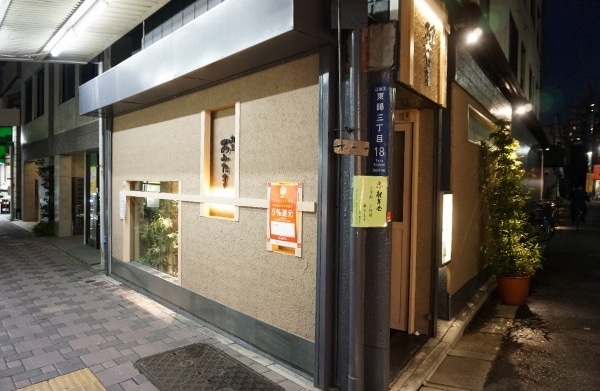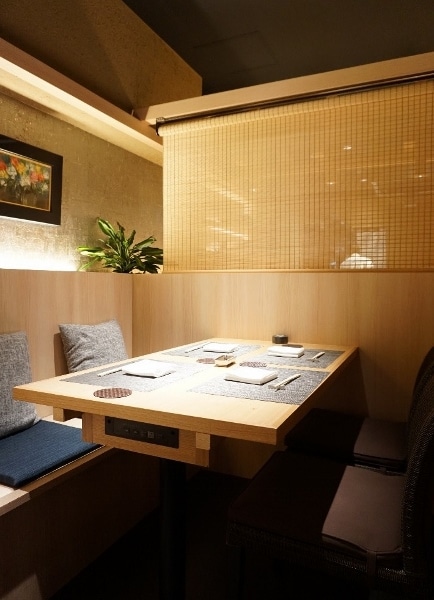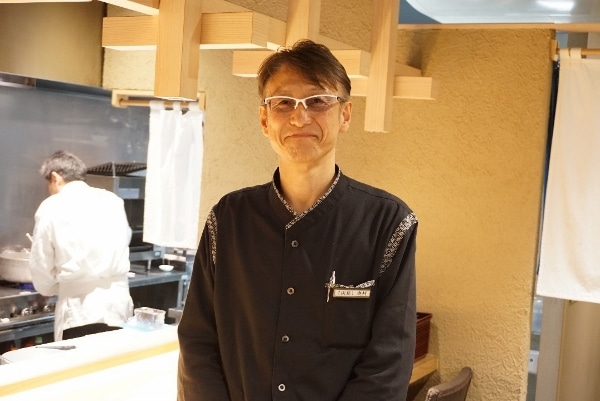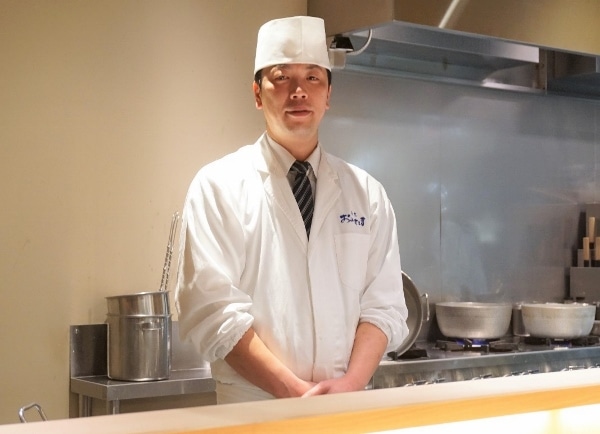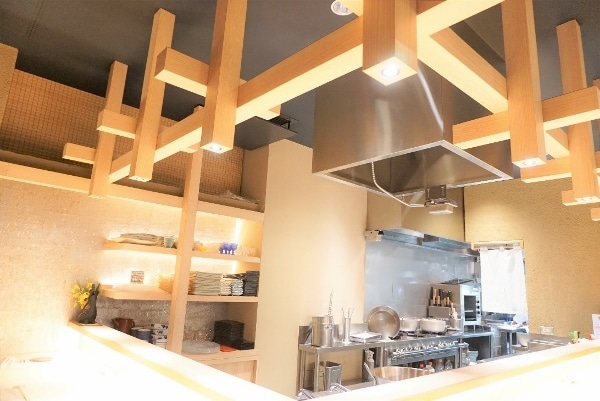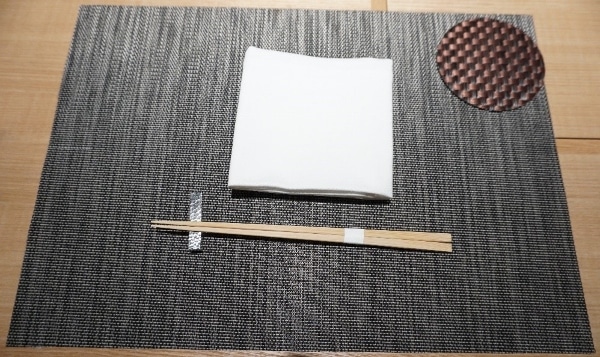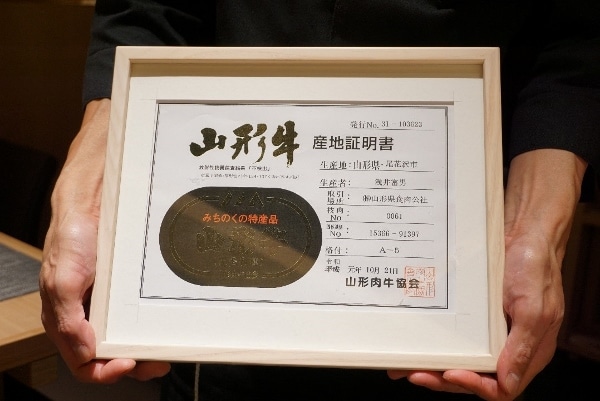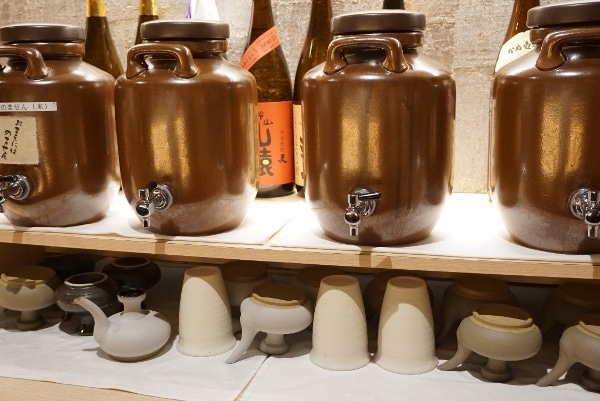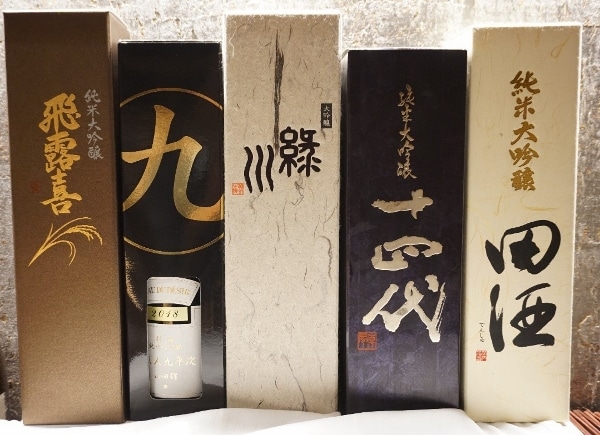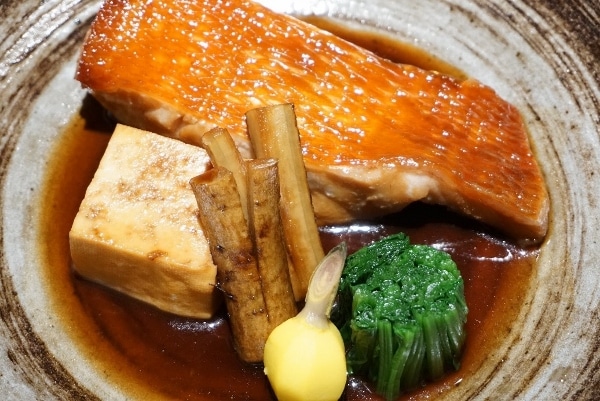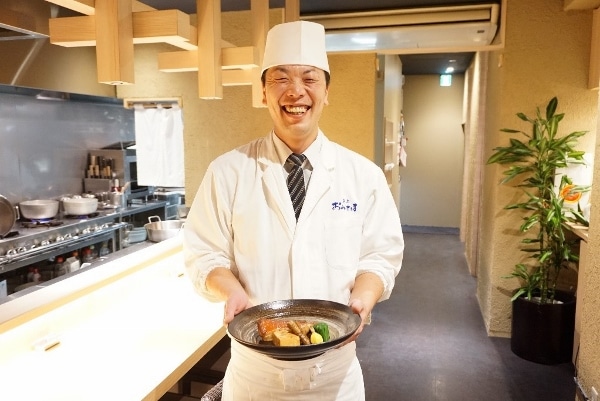Fine Dining in Toyo 3-chome
Published: November 29, 2019
Kappou, whose literal meaning is “cut and cook”, is a type of traditional Japanese fine dining. I have to admit I had never heard of the term until I visited Kappou Omitama, located on Ōmon-dori Avenue a short walk from Kiba Metro station, but I was eager to learn all about it.
Stepping into the restaurant your attention is immediately caught by the beautiful, understated layout of the interior. The use of wood is what makes so many Japanese restaurants attractive and Kappou Omitama is no exception. In its long interior, the light-coloured beams and uprights and “sudare” blinds come together to make a tasteful low-partitioned area with seating up to 22 customers whilst the counter area seats a further 9, giving the restaurant an overall impression of intimacy.
Opened in September 2018, Kappou Omitama is managed by Mr. Toshiyuki Okumura, who dresses in stylish modern-cum-traditional garb. He formerly worked at an apparel maker, but is now totally at home running the front side of this restaurant,
whilst the kitchen is run by Mr. Yukio Nakane, a skilled head chef with 16 years’ experience in the business.
As Mr. Okumura explained, “The restaurant’s owner designed the interior layout but leaves day-to-day management to me and Mr. Nakane. The owner hails from city of Omitama in Ibaraki prefecture, formed in 2006 from the merger of the townships of Ogawa, Minori and Tamari; hence the restaurant’s name, but now lives in Kasai. He likes good food and noticed that there were no kappou-style restaurants in the Kiba-Toyo area, so he decided to set one up in the current location. The restaurant also serves as a showcase for fresh products from Ibaraki, particularly its fruit, such as strawberries and musk melon, vegetables and “koshi hikari” rice.”
The restaurant’s popularity originally spread by word of mouth locally among groups of women and female office workers, who account for around 70% of the lunchtime clientele. This is not surprising given that Kappou Omitama offers several different set lunches, starting at a reasonable 1,700 yen (including tax). As well as this there is a course menu for 2 for 3,500 yen (including tax) per person, although to enjoy this you need to book 24 hours in advance.
One feature of the smart and simple table settings is the beautifully tapered wooden chop sticks, which make handling the food that much easier. Mr. Okumura grinned when he said that these are a popular item with female guests who often ask if they can take them away after the meal. The restaurant will oblige and will even rinse them for you.
The evening sees a wider group of customers using the restaurant for special occasions and celebrations, and the more varied menu sees set courses start from 5,000 yen (plus tax). According to Mr. Okumura, in winter the 8,000 yen kamoshabu course (a kind of duck hot pot) using handmade soba supplied by a nearby shop is very popular.
The head chef, Mr. Nakane, insists on only using quality ingredients in the dishes he and his team prepare, such as the top-quality meat from Yamagata prefecture; Mr. Okumura proudly showed a framed certificate from the Yamagata Beef Cattle Association detailing the name of the breeder and the quality of the beef.
And for connoisseurs of Japanese drink, the restaurant stocks a selection of quality shochu and sake brands.
As a sample of what is in store for people dining at Kappou Omitama, Mr. Okumura conferred with Mr. Nakane, who prepared a dish of Izu kinmedai (golden eye snapper) boiled in a special dashi or stock, originating from Kyoto, accompanied by tofu, gobo (burdock), and spinach with a radish garnish.
It came simply presented and unlike many dashi, Kappou Omitama’s is not boiled for any length of time, and consequently is light and not too sweet, allowing the taste of the tender fish to come through. That and the juicy spinach and nicely-firm tofu made for a tasty dish.
As Mr. Okumura says, “Here at Kappou Omitama we aim to provide wholehearted hospitality, and if after a meal a customer tells me ‘that was delicious’, then I am satisfied.”
So, why not take a look at the restaurant’s website shown below for an idea of what is in store when you opt for a taste of upmarket dining in Toyo 3-chome?
Story and photographs by Jeremy Hutchinson


